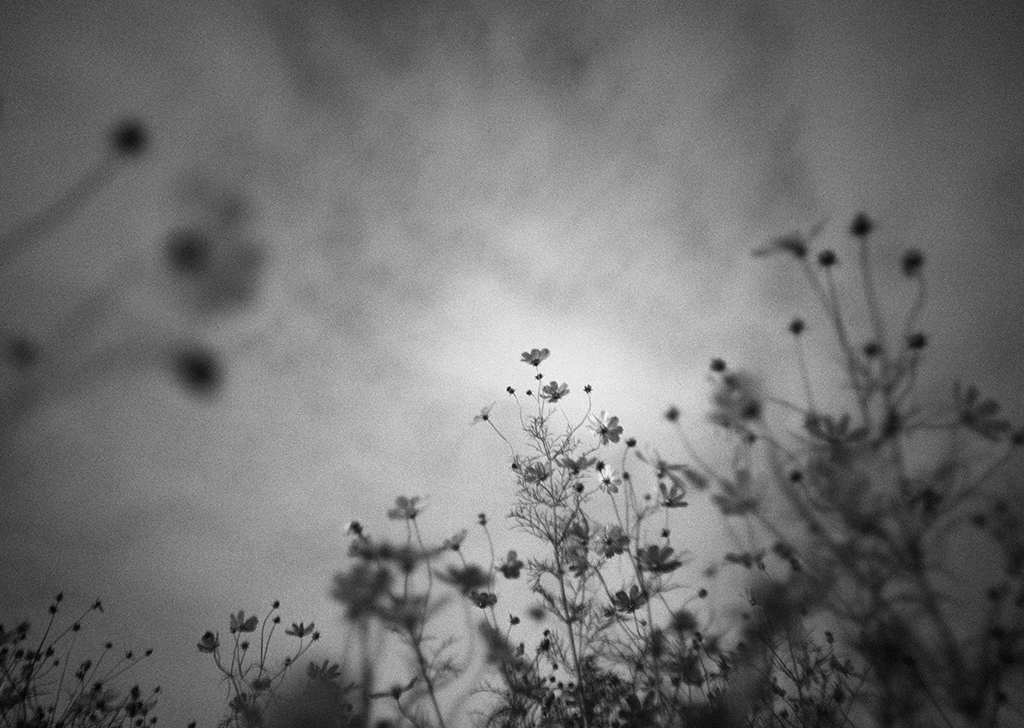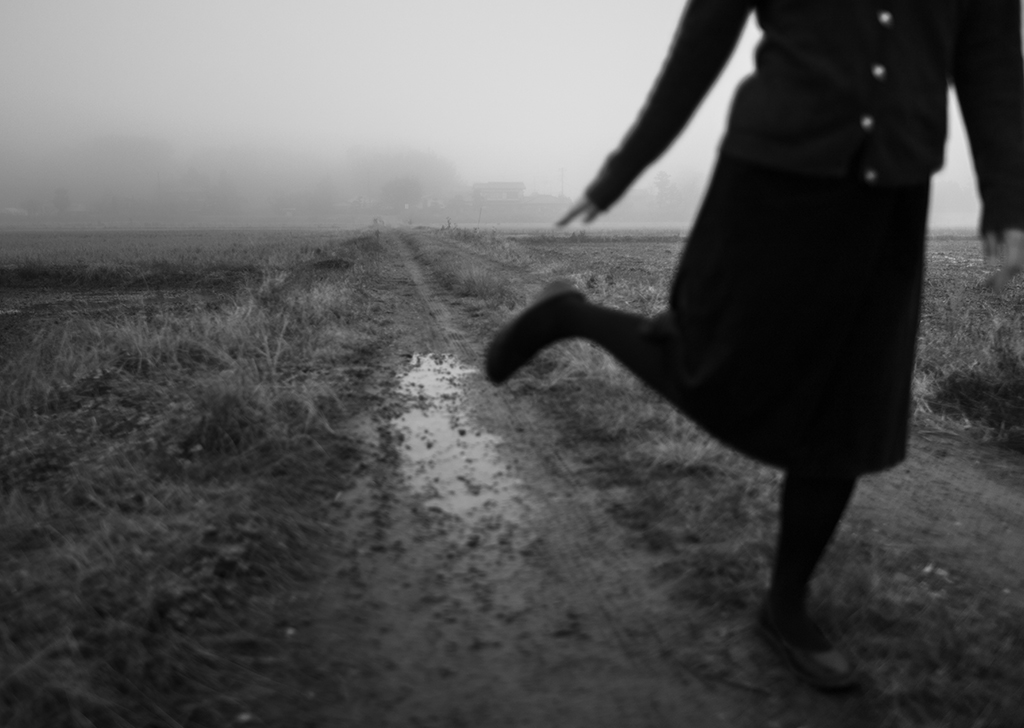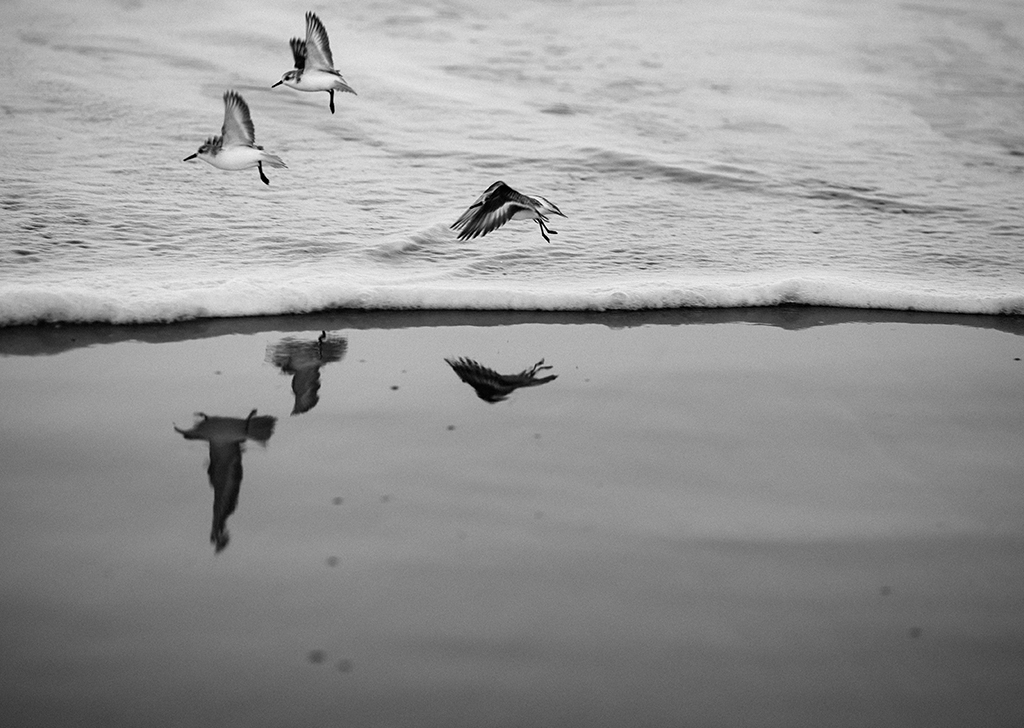
EOS 6D Mark II, EF24mm f/1.4L II USM, f/1.6, ISO 3200, 1/30s, 24mm
Back in the early days of photography, monotone photography was a result of the medium's limitations. However, with advancements in modern photography, sensors like those in cameras can capture millions of colours in a fraction of a second. Capturing images in black and white has become an artistic choice.
SNAPSHOT talks to Noriaki Kimura (@kimuranoriaki.1) whose black and white photography is cinematic and heavy with mood.
Noriaki received his PhD from Hokkaido University in 2000 and is currently engaged in research in the earth sciences. When he takes photographs, he focuses on the difference between the real and the unreal.

EOS 6D Mark II, EF24mm f/1.4L II USM, f/1.4, ISO 6400, 1/13s, 24mm
What draws you to black-and-white (b/w) photography?
This is a very difficult question. I have a strong attraction to photography. But I don't choose black and white photography with a strong will. It's just that I take a lot of pictures in black and white, but I also take pictures in color.
If I had to pick one reason, it would be that black and white photographs are less realistic, and I like it.
When did you realise that b/w photography was more suitable for you than colour?
I have been taking pictures mainly in black and white since my film days. This was mainly due to economic reasons. Black-and-white photography was the only option for me to develop and print my own images.

EOS 6D Mark II, EF24mm f/1.4L II USM, f/2, ISO 100, 1/400s, 24mm
The reason why I have mainly used black and white since then is the same reason as mentioned above, I don't want my photos to have a sense of reality.
Where do you draw your inspirations from?
I don't take pictures based on some kind of inspiration. I take pictures to get inspiration.
Your photos are moody; do you think you can convey the same feel through colour images?
I can create the same kind of atmosphere through colour images, but it is difficult to convey the same kind of message.

EOS 6D Mark II, EF24mm f/1.4L II USM, f/1.4, ISO 100, 1/1250s, 24mm
This is because most of my photographs are made up of black-and-white images, which lack a sense of reality.
What kind of photography do you feel is better depicted in b/w than colour?
I think that photography is about capturing the middle ground between reality and unreality, and black-and-white photography excels at capturing the unreal.
During post-processing, what settings do you usually adjust to get the effect you like?
In most cases, I just convert to black and white and adjust the brightness and tone curve.
What do you look out for before you press the shutter and capture the shot?
I try not to press the shutter at my own timing. It is the subject (whether it is an object or a landscape) that decides when to take the shot, so I try to listen to the voice of the subject.

EOS 6D Mark II, EF24mm f/1.4L II USM, f/1.4, ISO 6400, 1/8s, 24mm
Do you shoot in colour before converting them to b/w, or do you shoot in b/w straight out of the camera?
I always shoot in RAW, so my data contains colour information. However, when I want to create a black-and-white image, I start with black and white in mind when I shoot. In other words, I decide at the time of shooting whether to use black and white or colour.
What common mistakes do new photographers make in b/w photography?

EOS 6D Mark II, EF135mm f/2L USM, f/2.5, ISO 100, 1/1000s, 135mm
A common mistake is to take black-and-white photos without being aware of the difference between black-and-white and colour photos. If you want to finish your photo in black and white, you need to be aware of that from the beginning. It's a good idea to pay attention to light, shadow and texture.

EOS 6D Mark II, EF24mm f/1.4L II USM, f/1.4, ISO 100, 1/4000s, 24mm
Black-and-white photos are not just for mood or additional effect. For this photographer, it alters the photo’s relationship with the life it represents. If you’re planning to explore the world without colour, consider Noriaki’s advice on desaturation before you even press the shutter.
For similar articles:

































